Yongshun Gong
Channel-Independent Federated Traffic Prediction
Aug 06, 2025



Abstract:In recent years, traffic prediction has achieved remarkable success and has become an integral component of intelligent transportation systems. However, traffic data is typically distributed among multiple data owners, and privacy constraints prevent the direct utilization of these isolated datasets for traffic prediction. Most existing federated traffic prediction methods focus on designing communication mechanisms that allow models to leverage information from other clients in order to improve prediction accuracy. Unfortunately, such approaches often incur substantial communication overhead, and the resulting transmission delays significantly slow down the training process. As the volume of traffic data continues to grow, this issue becomes increasingly critical, making the resource consumption of current methods unsustainable. To address this challenge, we propose a novel variable relationship modeling paradigm for federated traffic prediction, termed the Channel-Independent Paradigm(CIP). Unlike traditional approaches, CIP eliminates the need for inter-client communication by enabling each node to perform efficient and accurate predictions using only local information. Based on the CIP, we further develop Fed-CI, an efficient federated learning framework, allowing each client to process its own data independently while effectively mitigating the information loss caused by the lack of direct data sharing among clients. Fed-CI significantly reduces communication overhead, accelerates the training process, and achieves state-of-the-art performance while complying with privacy regulations. Extensive experiments on multiple real-world datasets demonstrate that Fed-CI consistently outperforms existing methods across all datasets and federated settings. It achieves improvements of 8%, 14%, and 16% in RMSE, MAE, and MAPE, respectively, while also substantially reducing communication costs.
Self-Supervised and Generalizable Tokenization for CLIP-Based 3D Understanding
May 24, 2025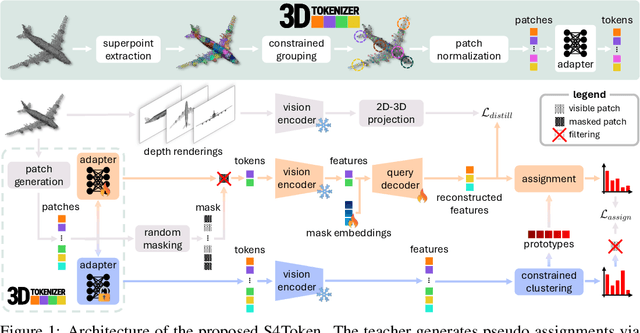

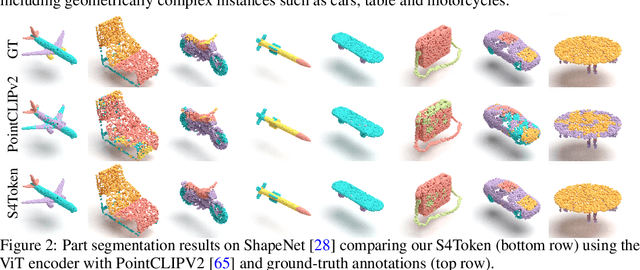
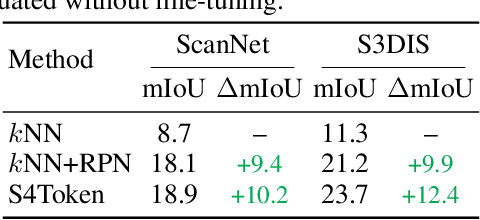
Abstract:Vision-language models like CLIP can offer a promising foundation for 3D scene understanding when extended with 3D tokenizers. However, standard approaches, such as k-nearest neighbor or radius-based tokenization, struggle with cross-domain generalization due to sensitivity to dataset-specific spatial scales. We present a universal 3D tokenizer designed for scale-invariant representation learning with a frozen CLIP backbone. We show that combining superpoint-based grouping with coordinate scale normalization consistently outperforms conventional methods through extensive experimental analysis. Specifically, we introduce S4Token, a tokenization pipeline that produces semantically-informed tokens regardless of scene scale. Our tokenizer is trained without annotations using masked point modeling and clustering-based objectives, along with cross-modal distillation to align 3D tokens with 2D multi-view image features. For dense prediction tasks, we propose a superpoint-level feature propagation module to recover point-level detail from sparse tokens.
Cross-Entropy Attacks to Language Models via Rare Event Simulation
Jan 21, 2025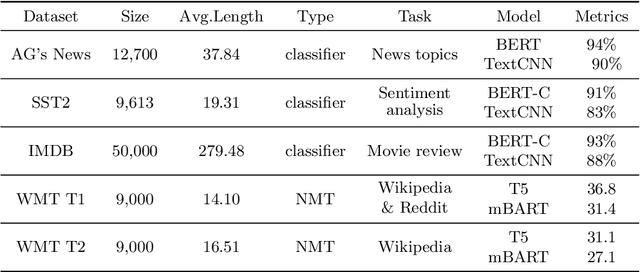
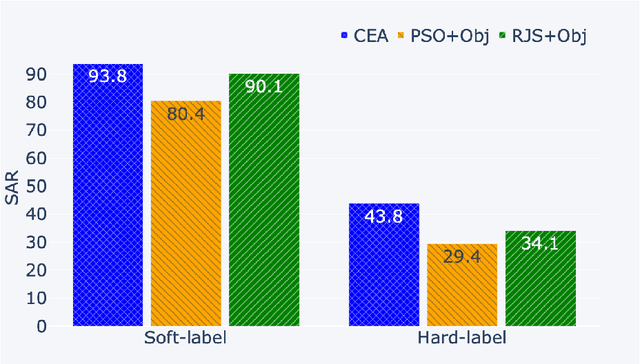
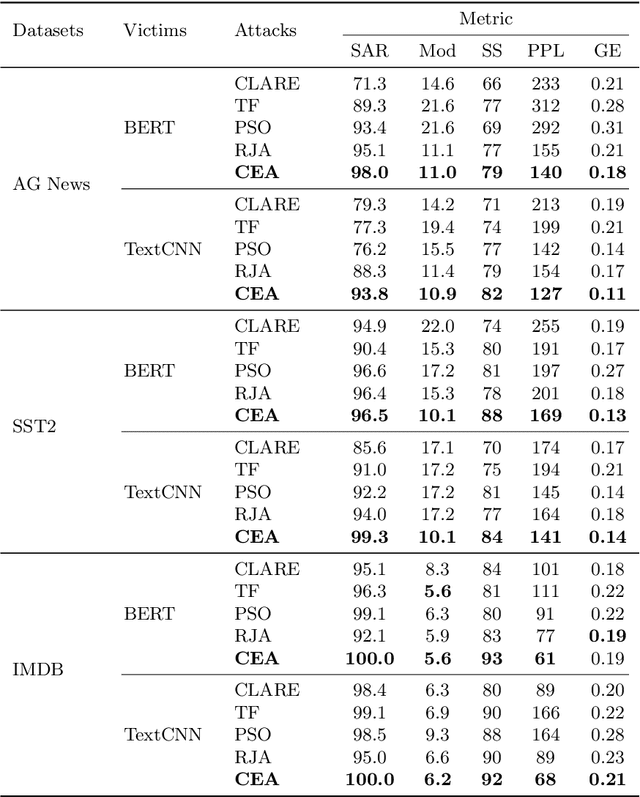
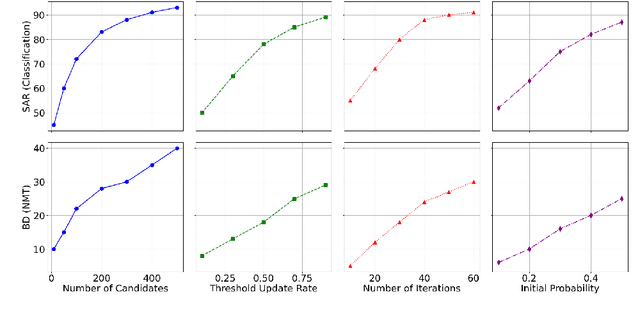
Abstract:Black-box textual adversarial attacks are challenging due to the lack of model information and the discrete, non-differentiable nature of text. Existing methods often lack versatility for attacking different models, suffer from limited attacking performance due to the inefficient optimization with word saliency ranking, and frequently sacrifice semantic integrity to achieve better attack outcomes. This paper introduces a novel approach to textual adversarial attacks, which we call Cross-Entropy Attacks (CEA), that uses Cross-Entropy optimization to address the above issues. Our CEA approach defines adversarial objectives for both soft-label and hard-label settings and employs CE optimization to identify optimal replacements. Through extensive experiments on document classification and language translation problems, we demonstrate that our attack method excels in terms of attacking performance, imperceptibility, and sentence quality.
PSReg: Prior-guided Sparse Mixture of Experts for Point Cloud Registration
Jan 14, 2025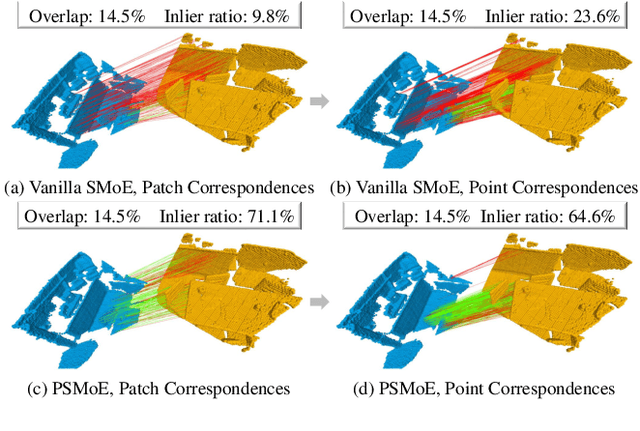
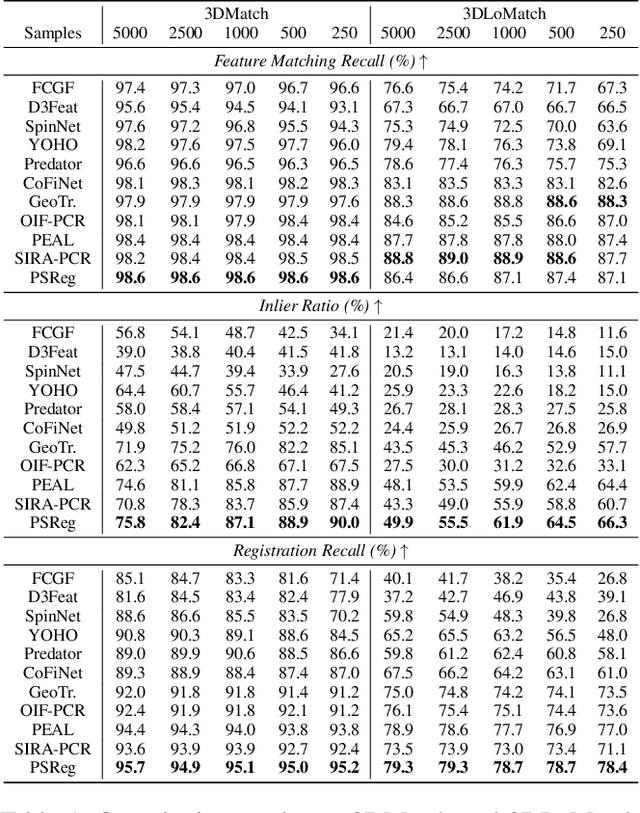

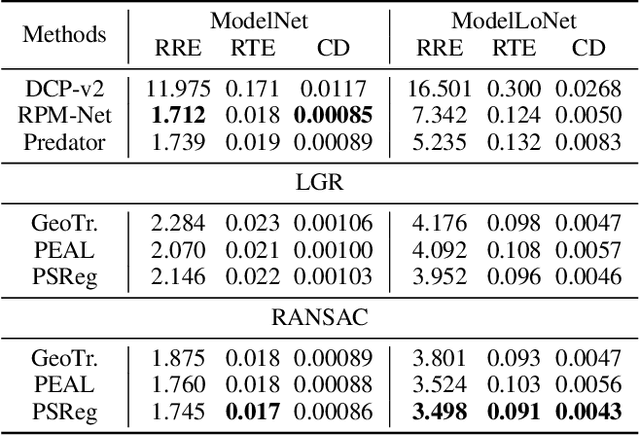
Abstract:The discriminative feature is crucial for point cloud registration. Recent methods improve the feature discriminative by distinguishing between non-overlapping and overlapping region points. However, they still face challenges in distinguishing the ambiguous structures in the overlapping regions. Therefore, the ambiguous features they extracted resulted in a significant number of outlier matches from overlapping regions. To solve this problem, we propose a prior-guided SMoE-based registration method to improve the feature distinctiveness by dispatching the potential correspondences to the same experts. Specifically, we propose a prior-guided SMoE module by fusing prior overlap and potential correspondence embeddings for routing, assigning tokens to the most suitable experts for processing. In addition, we propose a registration framework by a specific combination of Transformer layer and prior-guided SMoE module. The proposed method not only pays attention to the importance of locating the overlapping areas of point clouds, but also commits to finding more accurate correspondences in overlapping areas. Our extensive experiments demonstrate the effectiveness of our method, achieving state-of-the-art registration recall (95.7\%/79.3\%) on the 3DMatch/3DLoMatch benchmark. Moreover, we also test the performance on ModelNet40 and demonstrate excellent performance.
CodeV: Issue Resolving with Visual Data
Dec 23, 2024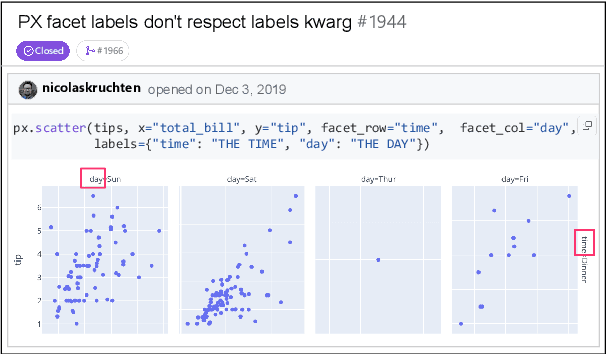
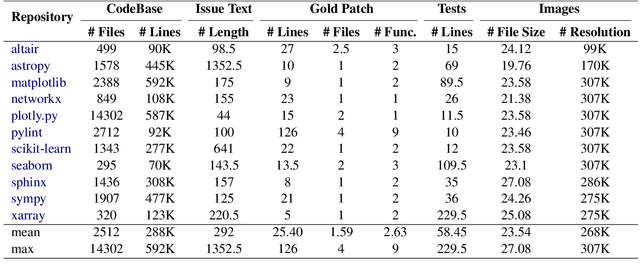
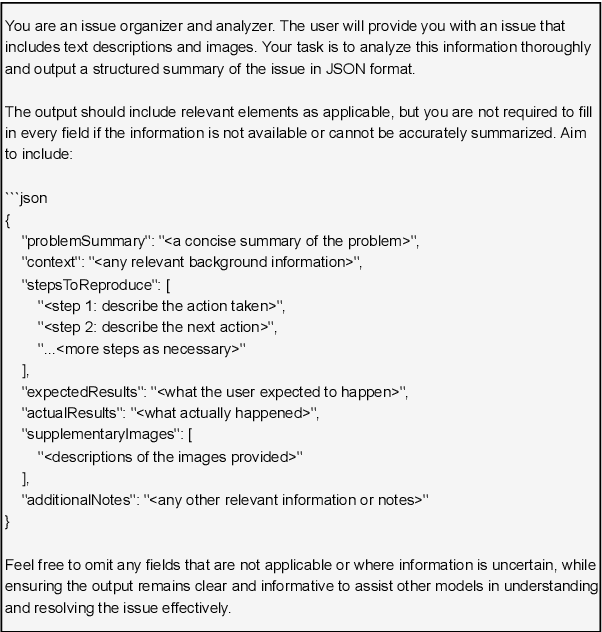
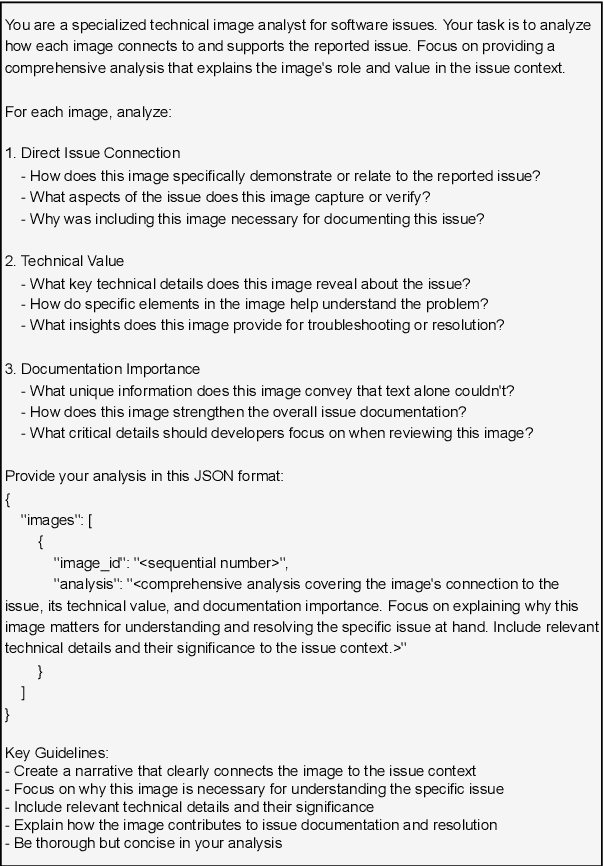
Abstract:Large Language Models (LLMs) have advanced rapidly in recent years, with their applications in software engineering expanding to more complex repository-level tasks. GitHub issue resolving is a key challenge among these tasks. While recent approaches have made progress on this task, they focus on textual data within issues, neglecting visual data. However, this visual data is crucial for resolving issues as it conveys additional knowledge that text alone cannot. We propose CodeV, the first approach to leveraging visual data to enhance the issue-resolving capabilities of LLMs. CodeV resolves each issue by following a two-phase process: data processing and patch generation. To evaluate CodeV, we construct a benchmark for visual issue resolving, namely Visual SWE-bench. Through extensive experiments, we demonstrate the effectiveness of CodeV, as well as provide valuable insights into leveraging visual data to resolve GitHub issues.
Content-aware Balanced Spectrum Encoding in Masked Modeling for Time Series Classification
Dec 17, 2024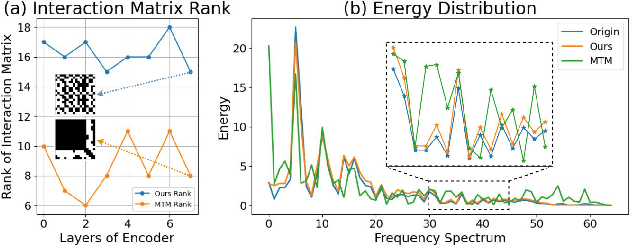
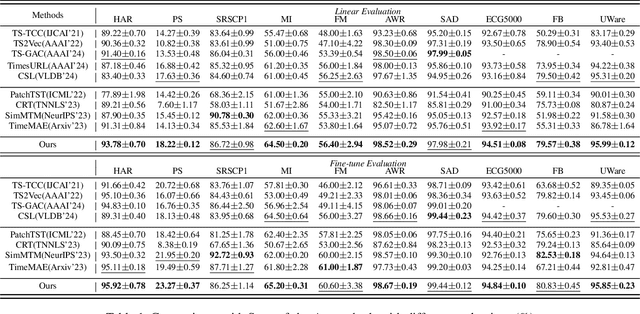
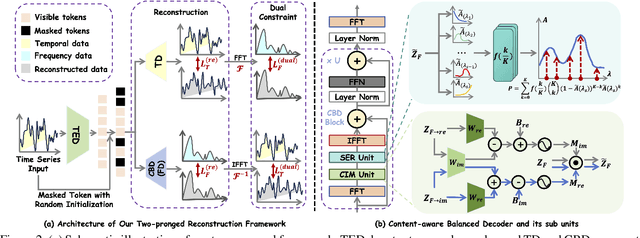
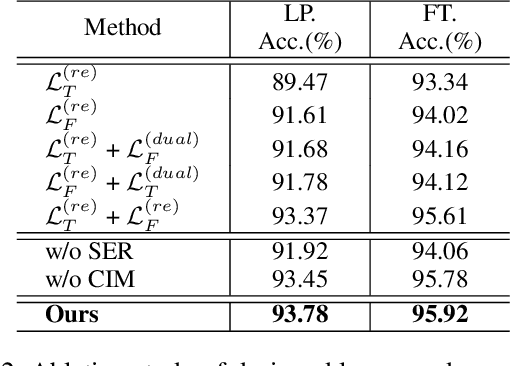
Abstract:Due to the superior ability of global dependency, transformer and its variants have become the primary choice in Masked Time-series Modeling (MTM) towards time-series classification task. In this paper, we experimentally analyze that existing transformer-based MTM methods encounter with two under-explored issues when dealing with time series data: (1) they encode features by performing long-dependency ensemble averaging, which easily results in rank collapse and feature homogenization as the layer goes deeper; (2) they exhibit distinct priorities in fitting different frequency components contained in the time-series, inevitably leading to spectrum energy imbalance of encoded feature. To tackle these issues, we propose an auxiliary content-aware balanced decoder (CBD) to optimize the encoding quality in the spectrum space within masked modeling scheme. Specifically, the CBD iterates on a series of fundamental blocks, and thanks to two tailored units, each block could progressively refine the masked representation via adjusting the interaction pattern based on local content variations of time-series and learning to recalibrate the energy distribution across different frequency components. Moreover, a dual-constraint loss is devised to enhance the mutual optimization of vanilla decoder and our CBD. Extensive experimental results on ten time-series classification datasets show that our method nearly surpasses a bunch of baselines. Meanwhile, a series of explanatory results are showcased to sufficiently demystify the behaviors of our method.
Deceiving Question-Answering Models: A Hybrid Word-Level Adversarial Approach
Nov 12, 2024



Abstract:Deep learning underpins most of the currently advanced natural language processing (NLP) tasks such as textual classification, neural machine translation (NMT), abstractive summarization and question-answering (QA). However, the robustness of the models, particularly QA models, against adversarial attacks is a critical concern that remains insufficiently explored. This paper introduces QA-Attack (Question Answering Attack), a novel word-level adversarial strategy that fools QA models. Our attention-based attack exploits the customized attention mechanism and deletion ranking strategy to identify and target specific words within contextual passages. It creates deceptive inputs by carefully choosing and substituting synonyms, preserving grammatical integrity while misleading the model to produce incorrect responses. Our approach demonstrates versatility across various question types, particularly when dealing with extensive long textual inputs. Extensive experiments on multiple benchmark datasets demonstrate that QA-Attack successfully deceives baseline QA models and surpasses existing adversarial techniques regarding success rate, semantics changes, BLEU score, fluency and grammar error rate.
Fine-Grained Urban Flow Inference with Multi-scale Representation Learning
Jun 14, 2024Abstract:Fine-grained urban flow inference (FUFI) is a crucial transportation service aimed at improving traffic efficiency and safety. FUFI can infer fine-grained urban traffic flows based solely on observed coarse-grained data. However, most of existing methods focus on the influence of single-scale static geographic information on FUFI, neglecting the interactions and dynamic information between different-scale regions within the city. Different-scale geographical features can capture redundant information from the same spatial areas. In order to effectively learn multi-scale information across time and space, we propose an effective fine-grained urban flow inference model called UrbanMSR, which uses self-supervised contrastive learning to obtain dynamic multi-scale representations of neighborhood-level and city-level geographic information, and fuses multi-scale representations to improve fine-grained accuracy. The fusion of multi-scale representations enhances fine-grained. We validate the performance through extensive experiments on three real-world datasets. The resutls compared with state-of-the-art methods demonstrate the superiority of the proposed model.
Diverse Teacher-Students for Deep Safe Semi-Supervised Learning under Class Mismatch
May 25, 2024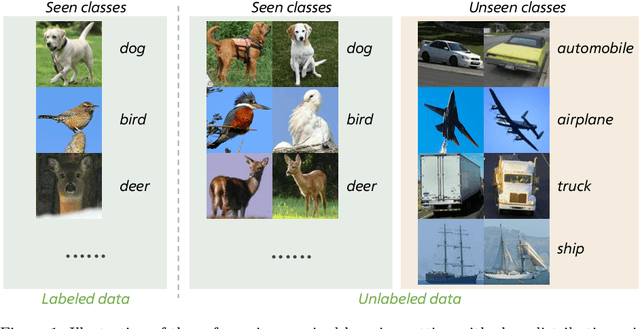
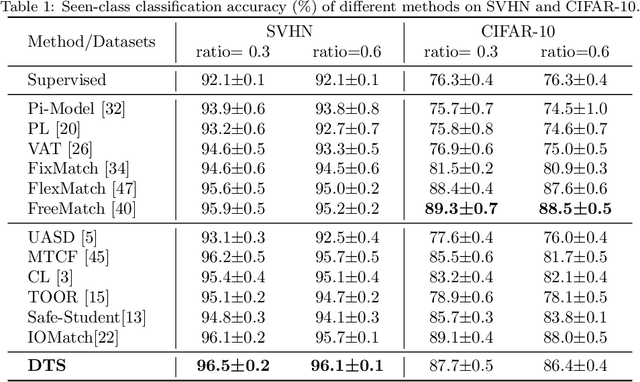

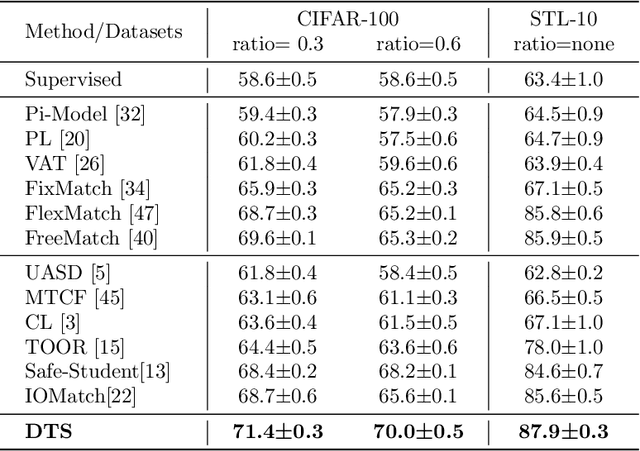
Abstract:Semi-supervised learning can significantly boost model performance by leveraging unlabeled data, particularly when labeled data is scarce. However, real-world unlabeled data often contain unseen-class samples, which can hinder the classification of seen classes. To address this issue, mainstream safe SSL methods suggest detecting and discarding unseen-class samples from unlabeled data. Nevertheless, these methods typically employ a single-model strategy to simultaneously tackle both the classification of seen classes and the detection of unseen classes. Our research indicates that such an approach may lead to conflicts during training, resulting in suboptimal model optimization. Inspired by this, we introduce a novel framework named Diverse Teacher-Students (\textbf{DTS}), which uniquely utilizes dual teacher-student models to individually and effectively handle these two tasks. DTS employs a novel uncertainty score to softly separate unseen-class and seen-class data from the unlabeled set, and intelligently creates an additional ($K$+1)-th class supervisory signal for training. By training both teacher-student models with all unlabeled samples, DTS can enhance the classification of seen classes while simultaneously improving the detection of unseen classes. Comprehensive experiments demonstrate that DTS surpasses baseline methods across a variety of datasets and configurations. Our code and models can be publicly accessible on the link https://github.com/Zhanlo/DTS.
3DBench: A Scalable 3D Benchmark and Instruction-Tuning Dataset
Apr 23, 2024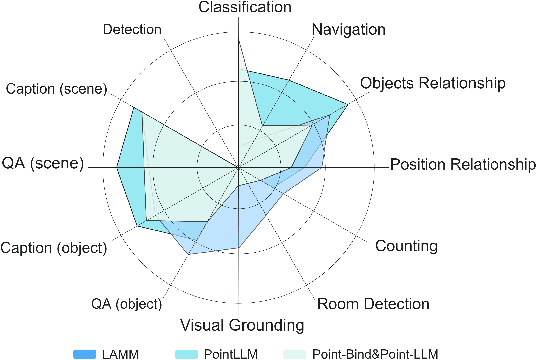
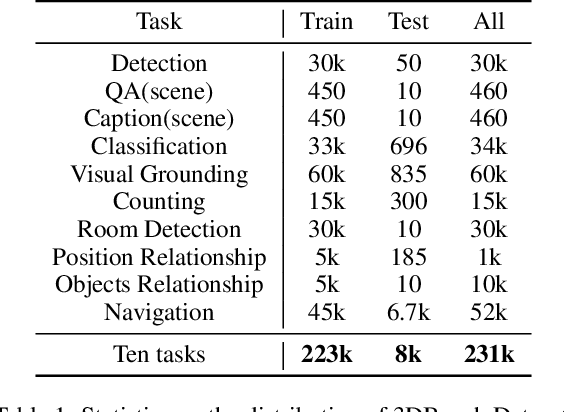
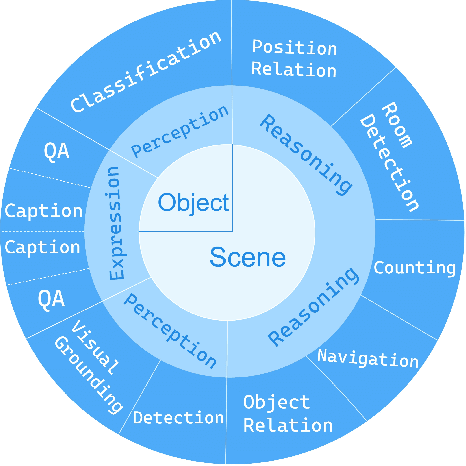

Abstract:Evaluating the performance of Multi-modal Large Language Models (MLLMs), integrating both point cloud and language, presents significant challenges. The lack of a comprehensive assessment hampers determining whether these models truly represent advancements, thereby impeding further progress in the field. Current evaluations heavily rely on classification and caption tasks, falling short in providing a thorough assessment of MLLMs. A pressing need exists for a more sophisticated evaluation method capable of thoroughly analyzing the spatial understanding and expressive capabilities of these models. To address these issues, we introduce a scalable 3D benchmark, accompanied by a large-scale instruction-tuning dataset known as 3DBench, providing an extensible platform for a comprehensive evaluation of MLLMs. Specifically, we establish the benchmark that spans a wide range of spatial and semantic scales, from object-level to scene-level, addressing both perception and planning tasks. Furthermore, we present a rigorous pipeline for automatically constructing scalable 3D instruction-tuning datasets, covering 10 diverse multi-modal tasks with more than 0.23 million QA pairs generated in total. Thorough experiments evaluating trending MLLMs, comparisons against existing datasets, and variations of training protocols demonstrate the superiority of 3DBench, offering valuable insights into current limitations and potential research directions.
 Add to Chrome
Add to Chrome Add to Firefox
Add to Firefox Add to Edge
Add to Edge